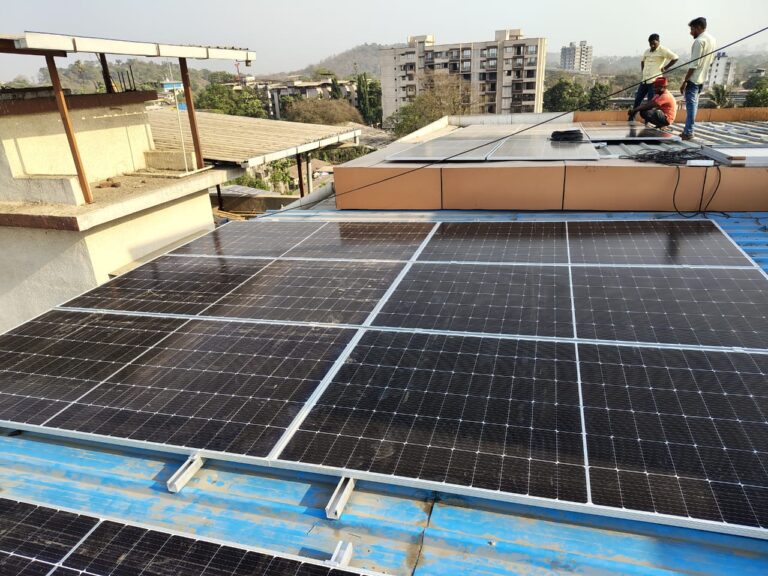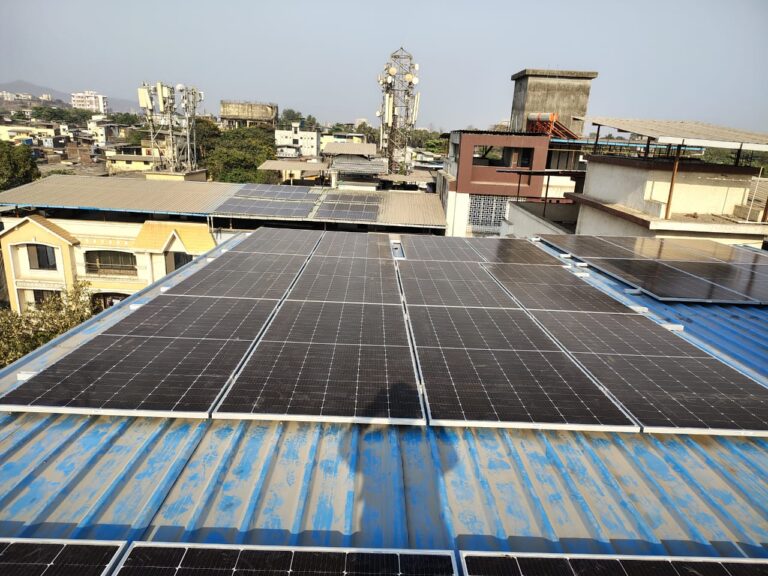HYBRID SOLAR SOLUTION
A hybrid solar system contains solar panels, a solar hybrid inverter, and battery storage to create an uninterrupted energy solution. The functionality of this system starts from a solar hybrid panel that helps to capture the sunlight and then convert it into DC (direct current) electricity. The DC electricity from the solar hybrid panel is converted into AC (Alternating Current) with the help of a solar hybrid inverter. The solar hybrid inverter is connected with the net meter as well as with batteries or a diesel engine. Then the excess solar energy produced during the day is stored in a battery for use at night or on cloudy days for a continuous electricity supply. These systems combine the best features of grid-tied and off-grid solar systems, ensuring continuous solar power operation. When solar and battery energy are insufficient, then Grid Connection draws power from the grid and also exports excess energy to the grid. This way, hybrid solar systems give you double the benefit, i.e., reduction of electricity bill and 24-hour power connectivity.
Technical Specification for Hybrid Solar Solution
- Note: The technical specification may vary based on the specific requirements of the project.
Solar Panel Array:
Type: Monocrystalline or Polycrystalline photovoltaic (PV) panels.
Efficiency: 18-22% (monocrystalline preferred for higher efficiency).
Capacity: 1 kW to 100 kW or more (scalable based on energy requirements).
Mounting: Rooftop or ground-mounted with tilt adjustment for optimal sunlight exposure.
Durability: Weather-resistant, with a lifespan of 25+ years.
Hybrid-Inverter:
Type: Hybrid inverter with grid-tie and battery backup functionality.
Capacity: 1 kW to 100 kW or more (matches solar panel capacity).
Input Voltage: Compatible with solar panel array voltage (e.g., 300V to 600V DC).
Output Voltage: 110V/120V or 220V/240V AC (matches grid voltage).
Battery Compatibility: Supports lithium-ion or lead-acid batteries.
Efficiency: ≥95% to minimize energy loss during conversion.
Certification: Compliant with grid standards (e.g., IEEE 1547, UL 1741).
Battery Storage System
Type: Deep-cycle lithium-ion or lead-acid batteries.
Capacity: 5 kWh to 20 kWh or more (scalable based on energy needs).
Voltage: 48V (common for hybrid systems).
Cycle Life: 3,000+ cycles for lithium-ion, 500-1,000 cycles for lead-acid.
Depth of Discharge (DoD): 80-90% for lithium-ion, 50% for lead-acid.
Charge Controller (if not integrated in inverter)
Type: Maximum Power Point Tracking (MPPT) for higher efficiency.
Capacity: 30A to 100A (matches solar panel and battery bank size).
Input Voltage: Compatible with solar panel array voltage.
Output Voltage: Matches battery bank voltage.
Protection Features: Overcharge, over-discharge, short-circuit, and reverse polarity protection.
Net-Metering-System:
Type: Bi-directional electricity meter.
Function: Measures energy imported from and exported to the grid.
Accuracy: Class 1 or higher for precise energy measurement.
Integration: Compatible with utility grid and solar system.
Credits: Enables earning credits for excess energy fed into the grid.
Monitoring and Control System:
Type: IoT-enabled or standalone monitoring system.
Features: Real-time energy production, consumption, battery status, and grid export tracking.
Connectivity: Wi-Fi, Ethernet, or GSM for remote monitoring.
Alerts: Notifications for system faults, low battery, or maintenance requirements.
User Interface: Mobile app or web portal for easy access to system data.


